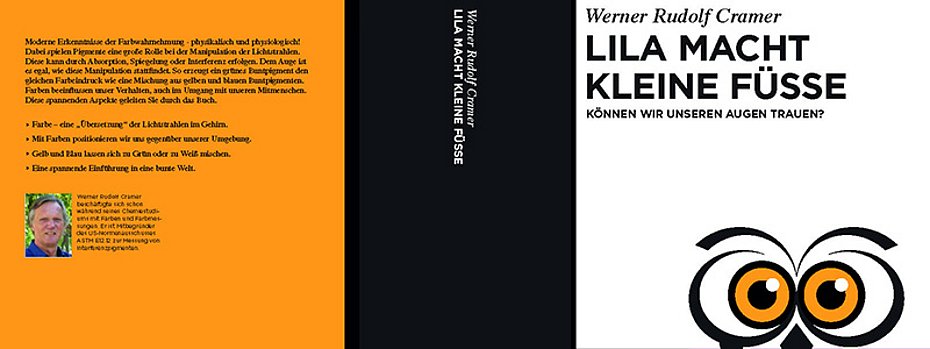Book review "Lila macht kleine Füsse" (Purple Makes Little Feet) - can we believe our eyes?
The matter-of-factness with which we see colors when our eyes open usually stands in the way of a more detailed study of colors. Especially in the area of surface, however, an intensive examination is necessary.
Nowadays, the English term "Appearance" covers all the properties of a surface. In addition to gloss and structure, its color is an important component to be assessed and described. Suitable color measuring instruments can provide objective data. Unlike verbal color descriptions such as intense blue, rose red, mustard yellow, etc., measured values provide unambiguous ways of defining a color.
Colors only exist in our brain
Just as a temperature indication such as warm or cold reflects subjective sensations and can only be described exactly by a thermometer, the physical measurement of a color is converted into a physiological color value. Basically, all processes in front of our eyes are of a physical nature. Mixing pigments in paint, plastic and the like is also part of this, as is shading. It makes no difference to the eye whether the green presented is linked to a green pigment or a mixture of a yellow and blue pigment. Our eye - and therefore our brain - cannot distinguish between an orange that is mixed and one that is not. Nor can we recognize, for example, that a yellow also reflects in the green and red spectral range and that these reflected light rays are additively combined by the brain to form yellow.
All processes in front of our eyes are described by the color spectrum. It shows the relationships between light rays of different wavelengths. The spectrum was first described by Isaac Newton in his lectures and publications. He decomposed white light with the help of a prism into its spectral color and was able to reassemble it into white. Goethe vehemently disagreed with this, but did not get the idea that Newton was working with light colors. Goethe's color theory is based on reflection colors, i.e. colored patterns are illuminated and the reflected light triggers a color sensation in us.
The greatest achievement of our brain is the ability to combine the two end colors of the spectrum, namely blue-violet and red, to form a new color. Purple does not exist in the color spectrum! The purple creates the color wheel, which shows the continuous change of the colors. From yellow it goes over orange, red, purple, purple, blue and green again to yellow. Basically, colors only exist in our brain. All processes in front of our eyes are physical in nature. And the fact that yellow and blue can be mixed to form green is due to the fact that green is already contained in both original colors - which we do not see. Green remains "left over" in the mixing process of yellow and blue. Yellow and blue can also be mixed to white if you use a yellow and a blue interference pigment - no witchcraft, but pure physics!
The eye is the best measuring device
In color measurement, the reflections of a sample are recorded. These are mathematically converted into color values using standardized equations. Different reflection curves can result in the same color values. It is therefore not possible to convert color values into reflectance values. In principle, the reflectance curves should be taken into account when developing new color compositions and also when nuancing. But for all methods the following always applies: The eye is the best measuring instrument and decides!
In his new book "Lila macht kleine Füsse" Werner Rudolf Cramer presents many phenomena in front of our eye and also behind the eye and in the brain. The content is based on many patterns with colored, aluminum and interference pigments and their mixtures. The majority of the samples were sprayed with common paints according to the instructions of the respective paint manufacturer. For some of the samples, pigments in varnish were applied to black and white cardboard. All samples were measured with various measuring devices, some with multiple angles, with a directional illumination angle or with spherical geometry.
The book is a goldmine for anyone who deals with colors - even professionally. It is written in an understandable and descriptive way.
Info and sources of supply
"Lila macht kleine Fuesse" by Werner Rudolf Cramer
ISBN 978-3-11-079390-1
Publisher De Gruyter, Berlin
176 pages with over 190 illustrations
The book is available in all bookstores and online. Further information also at www.lila.wrcramer.de

